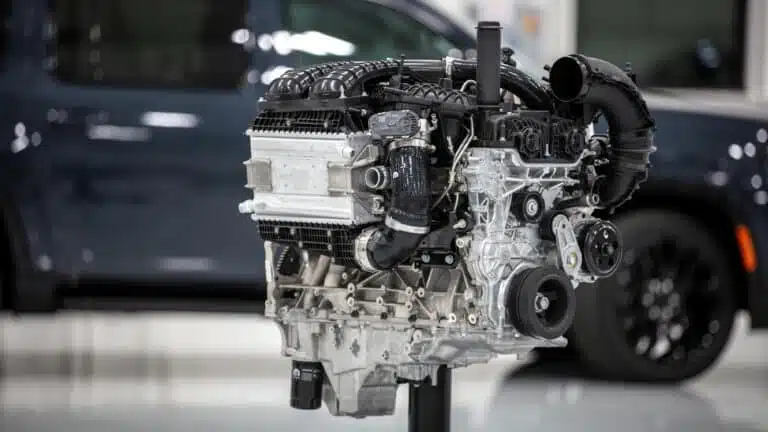Driving with deflated tires: effects on vehicle safety and performance

Driving with deflated tires is a situation that, although many drivers tend to underestimate, can have serious consequences for both safety and vehicle performance. As tires lose pressure, the stability, maneuverability, and braking ability of the car are compromised, thus increasing the risk of accidents. Additionally, the effects of driving with worn tires can lead to premature wear of other vehicle components, which ultimately translates into costly repairs.
Driving with deflated tires is not just an inconvenience, but it poses a series of significant risks for both the driver’s safety and the vehicle’s performance. In this article, we explore the hazards associated with driving on low air pressure tires, their consequences on vehicle stability, and the negative impact on the engine and brakes. Furthermore, recommendations are provided on how to prevent these situations and maintain safety on the road.
Risks associated with deflated tires
Potential damage to the vehicle
Driving with a deflated tire can cause considerable damage not only to the tire itself but also to the wheel and other parts of the vehicle. The lack of proper pressure increases the risk of the tire deforming, which may lead to the need for replacement instead of a simple repair. This can result in significant costs for the vehicle owner.
Impact on road safety
Road safety is seriously compromised when driving with deflated tires. The handling of the vehicle becomes more complicated, reducing traction on the road and increasing the risk of accidents. Especially at high speeds, controlling the vehicle becomes a real challenge, raising the likelihood of serious incidents occurring.
Risk of injury
Deflated tires not only put the driver at risk but also other road users. Driving irresponsibly with a deflated tire can result in accidents that affect other individuals. It is recommended to pull over in a safe location as soon as a loss of pressure in the tires is noticed.
Consequences on vehicle stability
Imbalance in driving
The stability of the vehicle is affected when driving with deflated tires. The contact area between the tire and the road is reduced, resulting in less grip. This can cause slips or loss of control during maneuvers like turns or sudden stops, creating a risky scenario for the driver and passengers.
Irregular tire wear
When a tire is deflated, the other tires must compensate for the lack of balance, leading to irregular wear of the tread. This not only shortens the lifespan of the tires but may require premature replacement, resulting in additional expenses for the vehicle owner.
Impact on the engine and brakes
Engine problems
A vehicle operating with a deflated tire needs to exert more effort to move forward. This overload results in increased fuel consumption and can lead to overheating of the engine, which potentially results in engine failure if not corrected in time.
Deterioration of the braking system
The imbalances generated by deflated tires also affect the braking system. The vehicle behaves unstably, meaning that the brakes are engaged unevenly, causing premature wear and a reduction in their efficiency.
Preventive measures and solutions
Regular tire pressure checks
One of the most important preventive measures is to check tire pressure at least once a month. This simple step can help not only prevent flat tires but also improve the vehicle’s fuel efficiency, as mentioned in this article.
Using appropriate tires
Another option is to consider investing in Runflat tires, which allow you to continue driving even in the event of air loss. However, they require a specialized tire pressure monitoring system and are not compatible with all vehicles.
Avoid prolonged parking
Finally, if the vehicle is going to be parked for an extended period, it is important to prevent permanent deformation in the tires. Using tire wedges or periodically moving the vehicle can help mitigate this risk.
Deflated tires pose a significant risk not only to the vehicle but also to the safety of the driver and other road users. Driving with inadequate pressure in the tires compromises the stability and control of the vehicle, increasing the likelihood of accidents. The traction of the tires on the road is affected, which translates into erratic vehicle behavior, especially in high-speed conditions or during abrupt maneuvers.
In addition to the accident risks, tires with low pressure accelerate irregular wear of the tread. A tire that is not properly inflated tends to wear unevenly, which could force drivers to replace them more frequently. This not only implies greater financial expenditure but also has a negative environmental impact by increasing the amount of waste generated by unusable tires.
The consumption of fuel also increases when driving with deflated tires, as they require more effort to roll. A poorly maintained tire generates more rolling resistance, causing the engine to work harder, resulting in a significant increase in fuel expenditure. This not only affects the driver’s economy but also contributes to greater resource expenditure and pollutant emissions.
Therefore, it is imperative to conduct regular checks on tire pressure and maintain proper maintenance to ensure optimal vehicle performance. Proper tire care is crucial to guarantee safety on the road and extend the vehicle’s lifespan.





